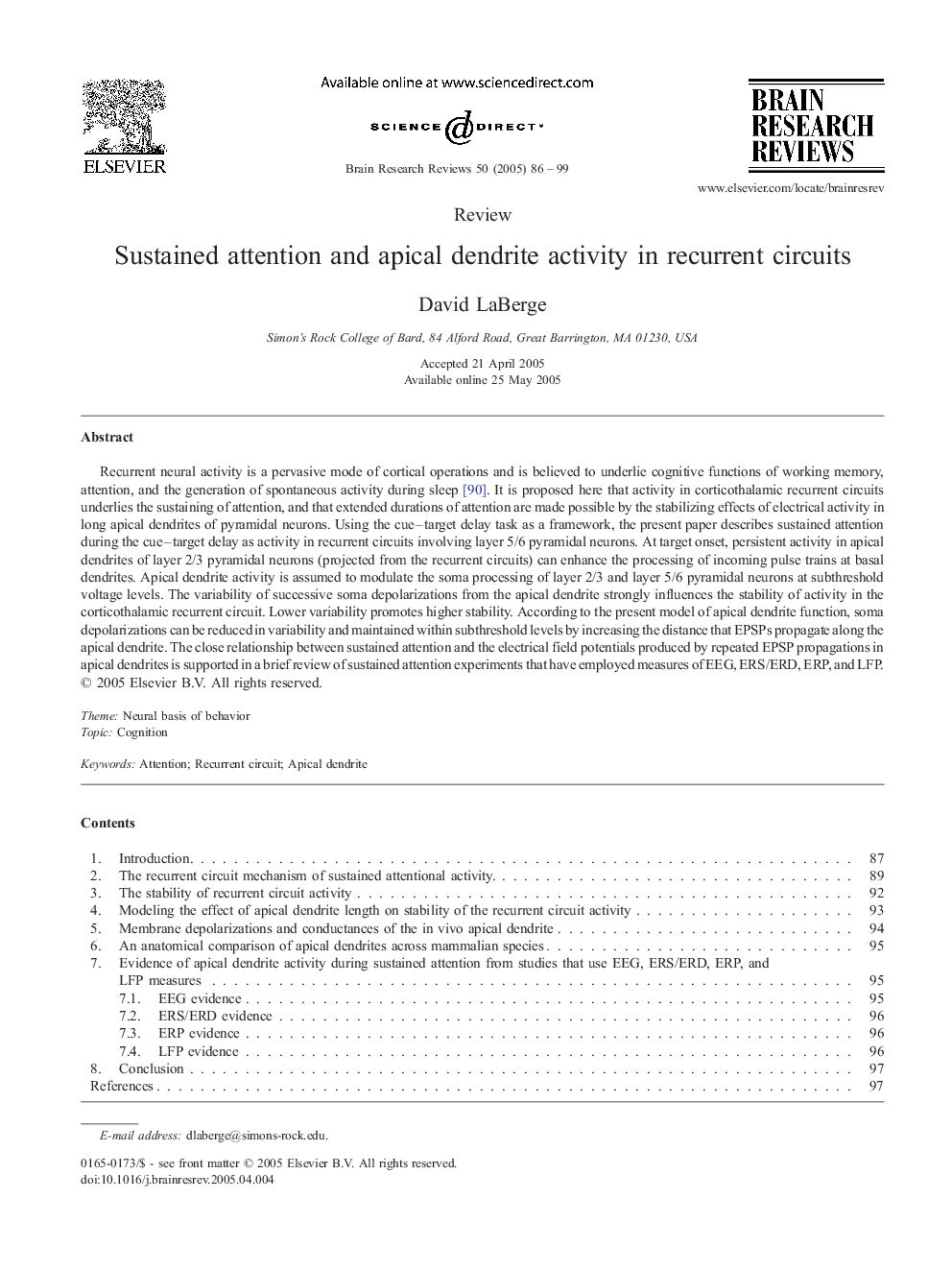| Article ID | Journal | Published Year | Pages | File Type |
|---|---|---|---|---|
| 9423045 | Brain Research Reviews | 2005 | 14 Pages |
Abstract
Recurrent neural activity is a pervasive mode of cortical operations and is believed to underlie cognitive functions of working memory, attention, and the generation of spontaneous activity during sleep [90]. It is proposed here that activity in corticothalamic recurrent circuits underlies the sustaining of attention, and that extended durations of attention are made possible by the stabilizing effects of electrical activity in long apical dendrites of pyramidal neurons. Using the cue-target delay task as a framework, the present paper describes sustained attention during the cue-target delay as activity in recurrent circuits involving layer 5/6 pyramidal neurons. At target onset, persistent activity in apical dendrites of layer 2/3 pyramidal neurons (projected from the recurrent circuits) can enhance the processing of incoming pulse trains at basal dendrites. Apical dendrite activity is assumed to modulate the soma processing of layer 2/3 and layer 5/6 pyramidal neurons at subthreshold voltage levels. The variability of successive soma depolarizations from the apical dendrite strongly influences the stability of activity in the corticothalamic recurrent circuit. Lower variability promotes higher stability. According to the present model of apical dendrite function, soma depolarizations can be reduced in variability and maintained within subthreshold levels by increasing the distance that EPSPs propagate along the apical dendrite. The close relationship between sustained attention and the electrical field potentials produced by repeated EPSP propagations in apical dendrites is supported in a brief review of sustained attention experiments that have employed measures of EEG, ERS/ERD, ERP, and LFP.
Related Topics
Life Sciences
Neuroscience
Neuroscience (General)
Authors
David LaBerge,
